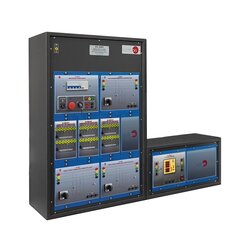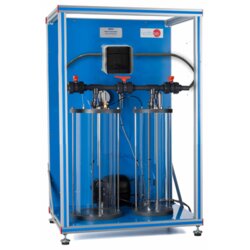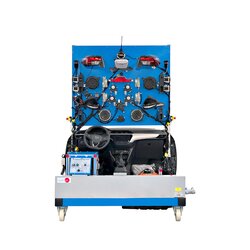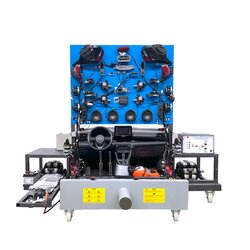Comprehensive Gasoline Test and Diagnostic Bench for Combustion Engines with Fault Simulation (TBM/G)
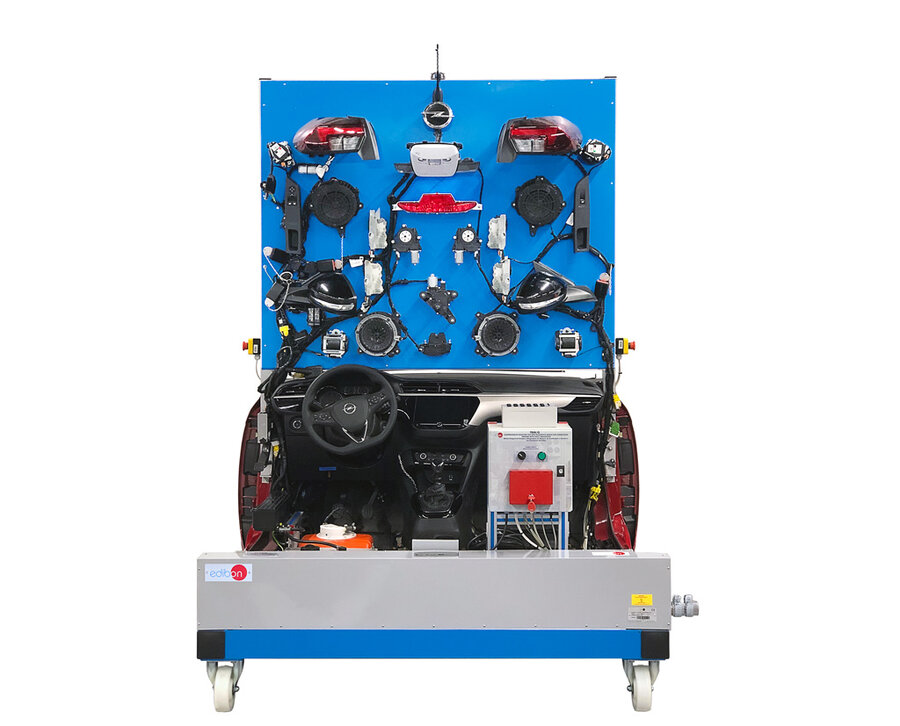

PL-694642
The Advanced Gasoline Test and Diagnostic Bench with Fault Simulation for Combustion Engines, “TBM/G”, is a high-performance system developed by EDIBON to perform comprehensive testing and accurate diagnostics on gasoline engines. Designed for engineers and technical professionals, this unit supports performance evaluation, fault detection, and engine optimization—ensuring reliability and efficiency in automotive maintenance and development.
At the core of this diagnostic bench is the internal combustion engine, which serves as the main focus of study. Its role is to transform the chemical energy in gasoline into mechanical energy through combustion in the cylinders. This unit facilitates a detailed analysis of this conversion process, including assessments of combustion efficiency, exhaust emissions, and overall performance—crucial factors for enhancing gasoline engine functionality.
- Air Intake System: Delivers the necessary oxygen for combustion and allows for real-time monitoring and analysis of air flow and quality. These parameters are essential for efficient combustion and directly influence engine power and fuel usage.
- Exhaust System: Removes combustion by-products and reduces operational noise. This system replicates that of a real vehicle, enabling detailed study of exhaust behavior and engine efficiency. It also allows for exhaust gas analysis to determine compliance with emission regulations and environmental standards.
- Fuel Supply System: Manages the exact fuel injection into the cylinders, a key factor in combustion efficiency and engine output. The TBM/G bench enables evaluation of multiple fuel injection parameters and supports adjustments to optimize fuel consumption based on test results.
- Cooling System: Designed to dissipate heat generated during combustion, preventing overheating and maintaining safe operating temperatures. Monitoring this system helps assess its efficiency and its effect on engine longevity and stability.
- Starting System: Includes an electric motor that triggers the initial combustion process. This component allows for detailed analysis of engine behavior during startup, particularly in cold-start conditions—essential for testing engine reliability across various environments.
The TBM/G also features a fault simulation module, which allows users to recreate and study common issues that may arise in gasoline engines—both in sensors and actuators. This hands-on capability helps students and technicians develop real-world diagnostic and troubleshooting skills within a controlled and safe learning environment. In addition, Bluetooth connectivity is included for live classroom monitoring and student evaluation during lab exercises.
The bench is equipped with a range of sensors that deliver real-time data on critical engine parameters such as pressure, temperature, RPM, and fuel/air ratios. This information supports in-depth performance analysis and allows for accurate system adjustments to improve engine operation.
An electronic terminal block is also included, providing access to the key signals from the ignition and injection systems. This feature enhances the diagnostic scope by enabling detailed study of these systems’ functionality under various conditions.
This unit not only supports the isolated study of each engine subsystem, but also facilitates complete diagnostic tests under realistic operating scenarios, such as overload and extreme temperature simulations. These comprehensive tests are vital for understanding engine performance under stress and for fine-tuning design or maintenance strategies.
Accurate diagnostics are essential to maintaining optimal vehicle function. With the TBM/G Gasoline Test and Diagnostic Bench, users can detect critical issues and inefficiencies that are vital for preventive maintenance. Early identification enables timely interventions before serious damage occurs and allows for real-time adjustments and repairs, enhancing engine reliability. The system supports performance evaluations across different operational contexts, helping extend engine life and efficiency.
- TBM/G. Unit:
- Anodized aluminum frame and panels made of painted steel.
- The unit includes wheels to facilitate its mobility.
- Main metallic elements made of stainless steel.
- Bench composed of the following elements: safety mushroom button, key, USB connector for computer, hood opening, and plug.
- Articulated and transparent hood with electric lock for full visualization of the complete system.
- High-strength aluminum chassis coated with epoxy paint, supported on 160 mm diameter wheels.
- Auxiliary panel composed of all the auxiliary elements found in a vehicle.
- Emergency mushroom button, lateral emergency button for engine detection. A safety mushroom button is provided on each side of the unit.
- Original vehicle fuel tank.
- Electronic throttle with lock.
- Liquid retention tank in case of leakage or improper handling.
- Battery box, includes 12 V car battery, battery cut-off relay for unit safety, and battery charger.
- Fuse and relay box, main engine fuses, and relays.
- Battery cut-off relay for unit safety.
- Gasoline engine block with all necessary elements involved in its proper operation: engine, injectors, coils, intake filter, intake manifold, ECU, etc.
- Diagnostic system displaying CAN network information on a high-resolution screen.
- Fault generation module with 14 faults.
- Terminal block with 12 electrical signals
- Cables and Accessories, for normal operation.
- Manuals: This unit is supplied with manuals.Required services, Assembly and Installation, Commissioning, Safety, Maintenance, and Practices manual.
EXERCISES AND PRACTICAL POSSIBILITIES TO BE DONE WITH THE MAIN ITEMS
- Identification of the combustion engine and each of its components.
- Startup of the unit and obtaining initial results during startup and operation.
- Procedure and analysis of cold start of an engine.
- Analysis of the main signals in the ignition and injection system of an engine.
- Study and analysis of common faults in a combustion engine.
What is this?
These percentage scores are an average of 0 user reviews. To get more into detail, see each review and comments as per below
If you have used this product, support the community by submitting your review
